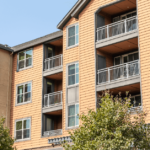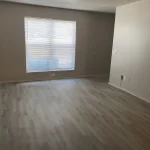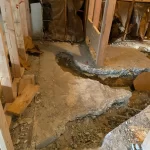Creating housing justice for Indigenous communities isn’t just about building homes—it’s about restoring dignity, preserving culture, and giving future generations a place to thrive. The LIHTC tribal housing development program has become a lifeline for many, helping tribal housing authorities address the urgent need for affordable housing for Indigenous communities. With resources like the LIHTC Native American housing initiatives and support from programs such as the Section 184 housing program, tribes are turning dreams into brick-and-mortar realities. From modern Indigenous affordable housing projects to sustainable designs that honor tradition, tribal housing tax credits are helping create neighborhoods that feel like home while tackling one of the most pressing challenges faced by Native nations.
The Housing Challenges Faced by Indigenous Communities
Across the U.S., tribal housing authorities face complex hurdles when it comes to providing safe, reliable homes.
- Overcrowding: Many families live in multigenerational households, not by choice, but because of the lack of available housing.
- Aging Infrastructure: Much of the existing housing stock is outdated, needing repairs or complete replacement.
- Limited Funding: Even with some federal support, it’s often not enough to meet demand for affordable housing for Indigenous communities.
- Geographic Isolation: Remote locations can increase construction costs and delay Indigenous affordable housing projects.
These challenges make solutions like the LIHTC tribal housing development program invaluable. It not only offers funding opportunities through tribal housing tax credits but also fosters collaboration between local leadership and national housing initiatives.
What Is LIHTC and How Can It Help Tribal Housing?
The Low-Income Housing Tax Credit (LIHTC) is a federal program that incentivizes private investment in affordable housing. For Native communities, this means:
- Leveraging tribal housing tax credits to attract developers who understand and respect cultural needs.
- Combining LIHTC funds with the Section 184 housing program to secure better financing terms.
- Supporting LIHTC Native American housing initiatives that prioritize sustainability and cultural authenticity.
The process typically involves tribal housing authorities applying for LIHTC allocations, then working with developers and investors to bring Indigenous affordable housing projects to life. This approach blends modern financing with the goal of preserving traditions, ensuring that new homes not only meet structural needs but also reflect Indigenous values.
Success Stories of LIHTC Tribal Housing Projects
Across the country, LIHTC has helped transform communities through meaningful LIHTC tribal housing development initiatives. Here are some inspiring examples:
- Tsigo Bugeh Village – San Juan Pueblo, New Mexico
This LIHTC tribal housing development delivered 40 Pueblo-style homes using a combination of tribal housing tax credits and NAHASDA funds. Designed around communal plazas, the project preserves cultural traditions while expanding affordable housing for Indigenous communities. - Domingo Housing – San Diego Tribal Housing Authority, New Mexico
As part of broader LIHTC Native American housing initiatives, the 2017 Domingo Housing project added 41 affordable rentals with monthly rents from $279 to $725. Led by the tribal housing authority, the development is structured so many units can transition to homeownership after the compliance period—an innovative model for Indigenous affordable housing projects. - Woo-Mehl LIHTC Homes – Yurok Tribe, California
With $7.7 million in tribal housing tax credits, the Yurok Tribe created 17 energy-efficient, culturally inspired homes featuring smokehouses, a community pavilion, and designs rooted in tribal tradition. This award-winning project is a standout example of LIHTC Native American housing that blends sustainability with heritage.
Each of these projects demonstrates how LIHTC Native American housing initiatives, when combined with community leadership, can bring lasting change.
Final Thoughts: Building a Stronger Future for Indigenous Communities
The path to housing justice for Indigenous communities is paved with innovation, cultural respect, and collaboration. The LIHTC tribal housing development program continues to be a cornerstone in addressing housing shortages, empowering tribal housing authorities, and expanding affordable housing for Indigenous communities. When paired with tools like the Section 184 housing program and fueled by tribal housing tax credits, these efforts turn visions into thriving neighborhoods.
If you want to explore how LIHTC Native American housing can transform your community or learn more about successful Indigenous affordable housing projects, contact us today. Together, we can build a stronger future—one home at a time.










